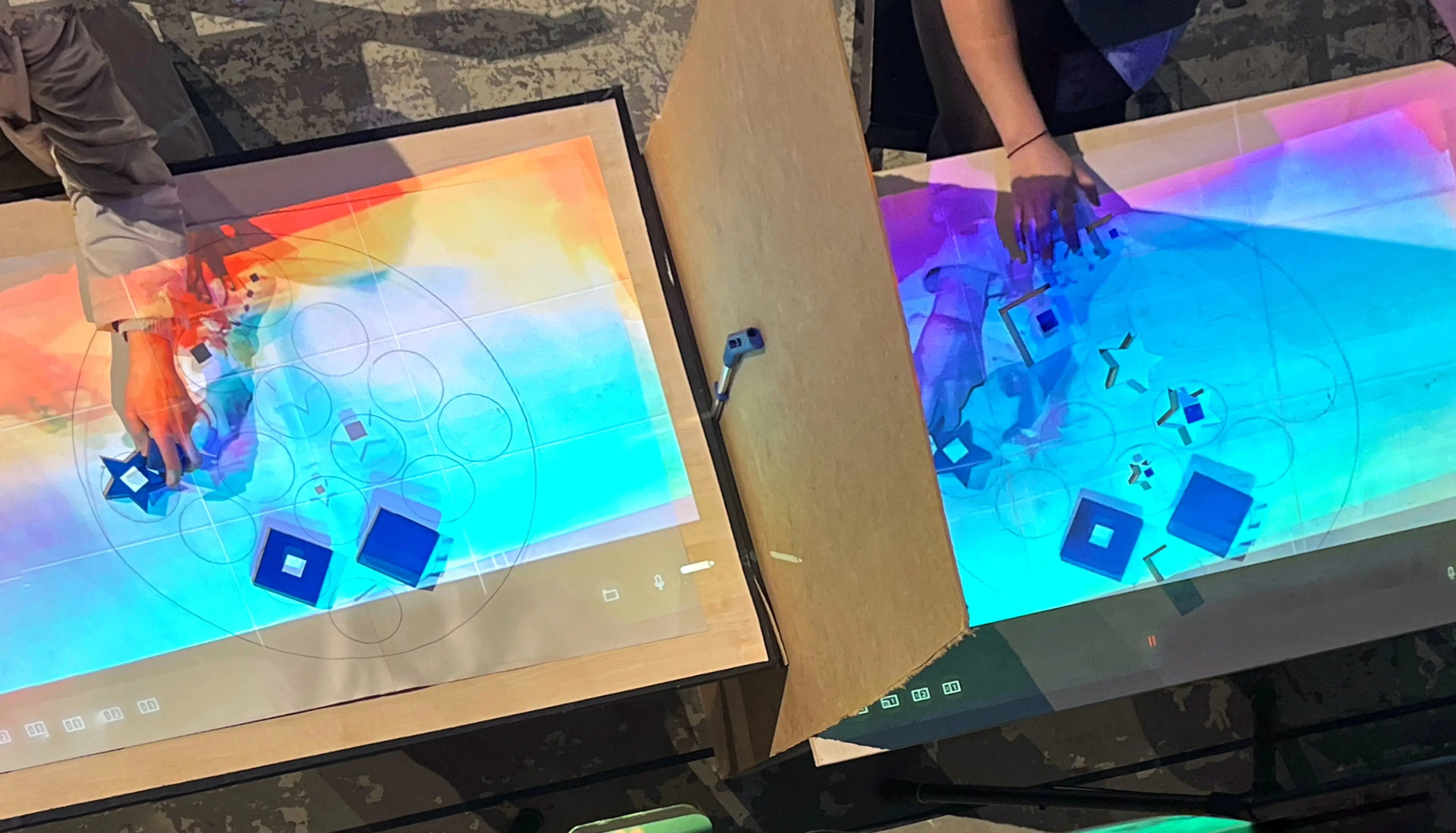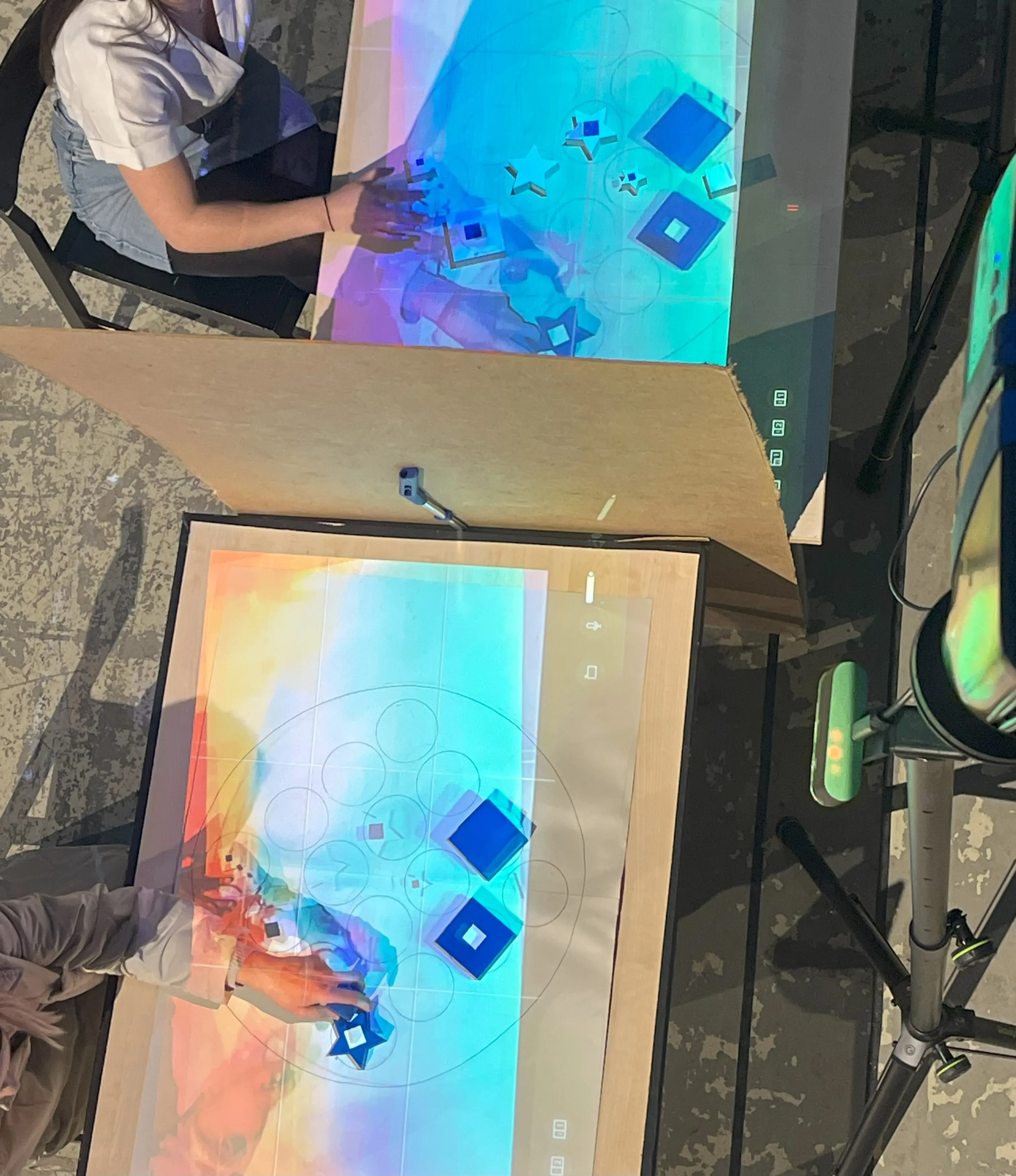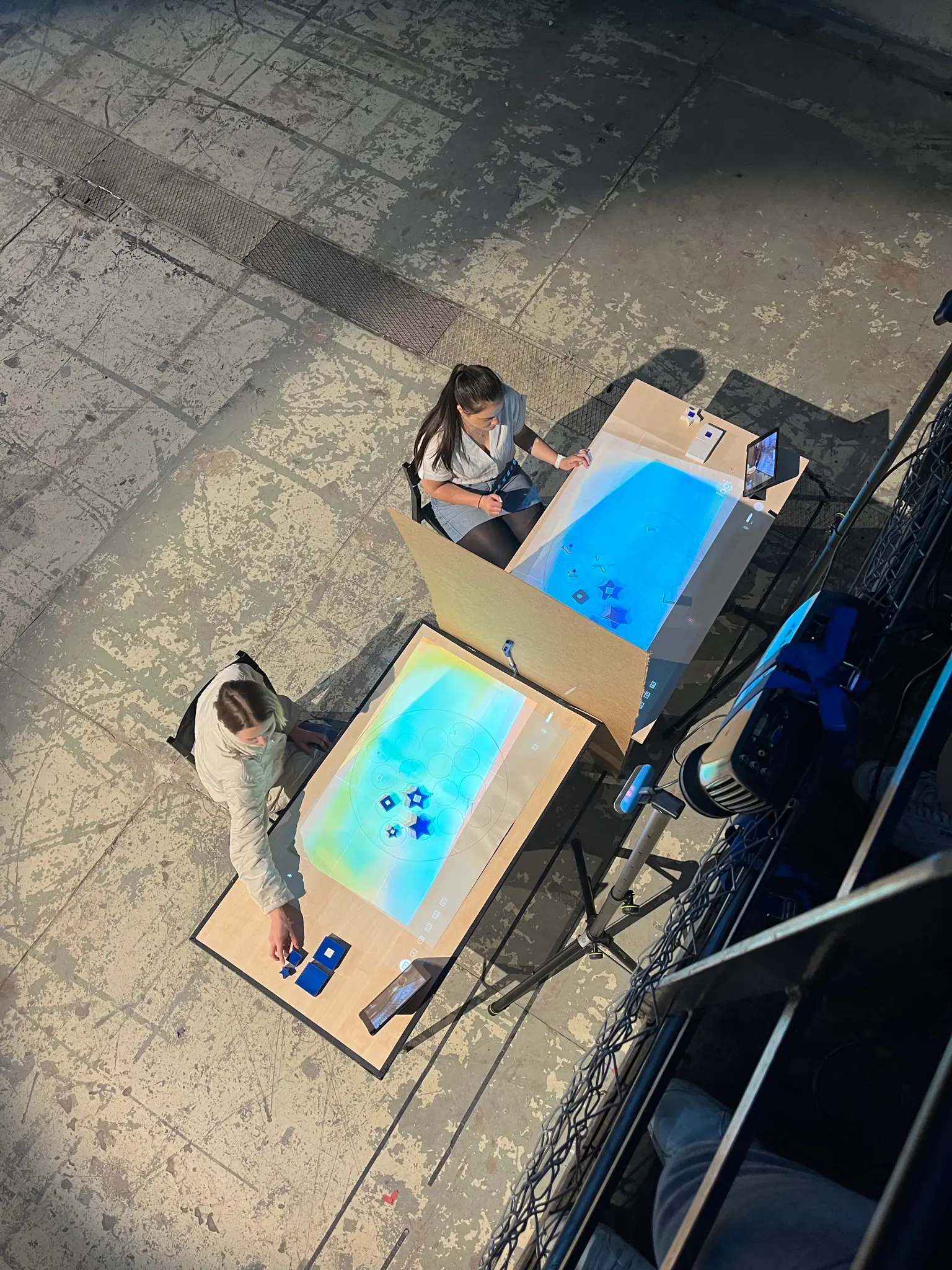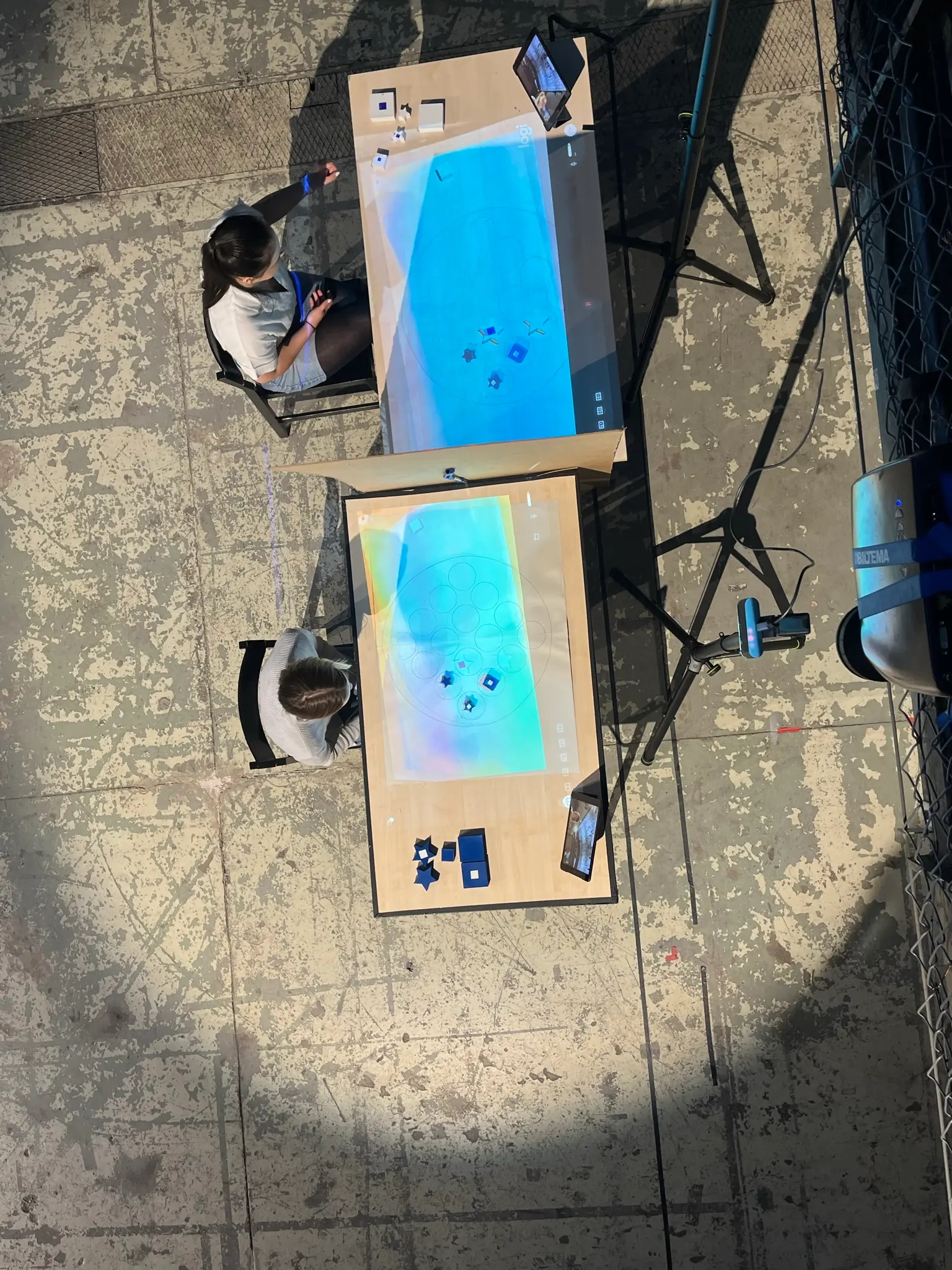The rising popularity of technologies such as Zoom, which aim to provide a hybrid environment, depends mostly on giving presence during meetings. However, there are other sectors where telepresence in hybrid scenarios might be used well, such as playing board games. Board games, especially classics like Quarto or Othello, have a substantial social component that is inevitably reduced when played only through digital contexts.
Recognizing the loss of social connection and the need to bridge the gap between physical and digital gameplay experiences, our incentive to begin with this project was to achieve telepresence in hybrid board game situations.
It is possible to reproduce and enhance the social dynamics that characterize conventional board game sessions by exploiting the benefits of hybrid technology, resulting in a more immersive and engaging experience for participants.
As mentioned earlier, our aim is to find the potential to not only improve the gameplay experience, but also to contribute to the development of novel techniques for creating social connections and meaningful interactions in hybrid situations beyond business/professional interactions.
We started off the project through a brainstorming session in which we proposed different ideas on how to approach the project theme hybrid. We also discussed the meaning of hybrid and how the theme could translate into different contexts.
One central insight we discussed was that a physical concept and the experience of such could perhaps not be completely replaced with technology. Due to this uncovering, we landed in that we needed to developed an innovative experience, based on a physical concept.
Following this, we elaborated on how different ideas related to this focus and how it could be realized within the project. For instance, we discussed the idea of utilizing projection.
To gain feedback on the concept and additional input, we performed an expert evaluation, where the invited game design expert provided suggestions regarding i.a. technology and implementation.
TELEPRESENCE
IN BOARD GAME INTERACTION DESIGN
PHYSICAL DISTANCE GAMING
In the era of advancing technology, traditional board games are undergoing a remarkable transformation through the integration of telepresence capabilities. Telepresence is an approach that enables individuals located in different physical spaces to engage in immersive experiences, as if they were at the same physical location. The integration of telepresence technology has bridged the gap between physical and digital interactions, where individuals can connect and collaborate in real time regardless of their physical location. By using telepresence technologies, board game players can overcome geographical and time limitatations, thus working as an equivalent replacement for in-person boardgaming. In order to transform the way people connect, compete, and enjoy board games, we investigated the advantages, potential and complexities of playing board games with telepresence experiences. We wanted to explore the technological requirements for a smooth telepresence experience, including the required hardware and software elements. This project also looks into how telepresence affects social dynamics, player involvement, and the overall board gaming experience. [May 2023]
Design Process

To further concretize the ideas generated from the brainstorming and the conceptualization phase, a more concrete sketch of the ideas was made. The sketching allowed for a more outlined idea, combining possible technologies with the concept of board games. In addition, sketches were made for more detailed aspects of the concept, for example the game pawns and playing board for the game. While the sketches for the playing board were mostly made on paper to visualize different aspects and attributes a playing board should have, the sketches for the game pawns were mostly digital and made in the 3D printing tools TinkerCad. This tool gives a 3D view of the model being sketched, and provides precise dimensions making them easily adjustable. This allowed us to try several shapes and sizes to find appropriate ones in regards to the technology used and the desired experience of the board game.

To easier describe the setup, the components will be called A and B. Camera A was connected to computer A, which, in turn, was connected to projector B using an HDMI cable. Similarly, camera B was connected to computer B and projector A via an HDMI cable. Essentially, camera A captured the view from camera B through the projection from projector A, while camera B did the same with camera A's view. This configuration allowed for double projection to be achieved. To prevent video looping, it was crucial to ensure that the cameras captured only the projection and nothing else. This requirement was successfully met by utilizing Logitech Capture, a software tool that facilitated control over the zoom and angle settings of the cameras. The cameras were placed on camera stands that were elevated to their maximum height which guaranteed complete coverage of the entire projection area. The projectors were utilized to project the camera view of the other person onto a table. To play the game, each person had their own set of pawns from a board game called Quarto. Additionally, one person had the game board placed on their table. We took the initiative to create custom pawns and a larger game board, ensuring that the setup was clearly visible through the camera and projector. As previously mentioned, the objective of this project was to explore board games in a hybrid setup. However, for demonstration purposes of this prototype, we employed a direct connection between the computers and projectors of both users. To simulate a hybrid setup, an artificial wall was used to separate the tables. Additionally, an iPad was positioned in the corner of each table, facilitating an ongoing FaceTime call. This arrangement was designed to optimize the telepresence experience, enabling users to engage in verbal communication, observe one another's facial expressions, and closely monitor hand and pawn movements during gameplay, all the while having tangible physical pawns that they can physically move themselves. In the final demonstration of the prototype, we performed a live-on user evaluation, to understand users' experiences better and to gain feedback of the prototype for the final adjustments.

